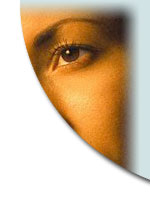





|
1. Epi-Adaptor lateral light shield reduces operator ophthalmic fatigue. |
The light scatter during treatments has been a problem for the photo-sensitive operators. Since the intensity of the IPL devices is very high, the light reflected in the room triggers the bio-sensors within the eyes to close the pupils. The short period of light delivery is sometimes responsible for the headaches developed by the hyper-sensitive operators. The light shielding achieved by the Epi-Adaptor is sufficient enough that the only light backscatter seen by the operator is from the back scattering on the sides of the irradiation spots.
|
2. Gel effects on the delivery of light through the crystal. |
Light is trapped inside the crystals delivering it to the tissue. The index of refraction is responsible for containing light as it bounces back and forth within the crystal. When the crystal is inserted into gel with a similar index of refraction, it causes the light to escape laterally due to the lack of boundary condition. Consequently, the power density of the light to tissue is varying depending on the thickness of the gel. This phenomenon has been another reason for getting inconsistent or insufficient treatments of skin conditions using an EpiLight or MultiLight system.
|
3. Thermistor control of the epidermal light shield interface. |
A thermistor placed against sapphire measures the epidermal temperatures within .5 degrees C. The use of cryogen allows the precise control of cooling within (+/-) 1 degrees C, unattainable using any other technology. The use of an air blower will produce varying temperatures depending on the room temperature, temperature of gel, speed of treatments, curvature of skin, and the distance from tissue.
OptoGenesis | 11509 North Lamar Blvd. | Austin, TX 78753
512.451.3333 | Fax 512.533.9999
Contact
©2002 - 2004 OptoGenesis
Copyrights and Trademarks